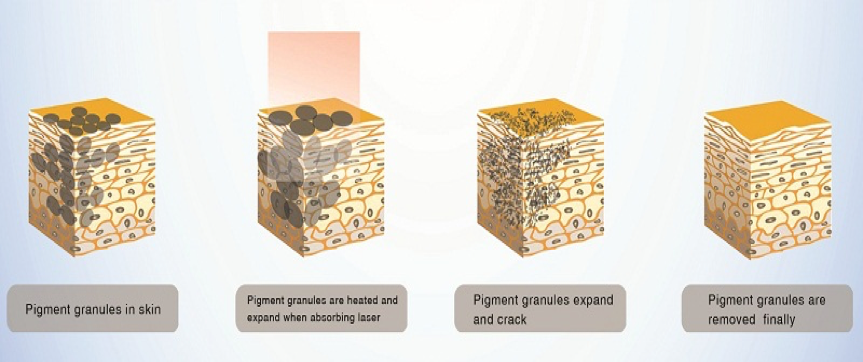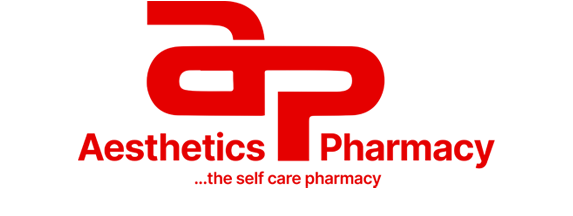What is Q-Switched Laser treatment for Hyperpigmentation?
The Q Switched Nd:YAG is a type of laser technology useful in Laser hyperpigmentation treatment for both superficial and deep skin discoloration. It produces 2 wavelengths, one in the infrared range (1064 nm) for deeper skin lesions and a second beam of 532 nm wavelengths which is useful for superficial skin lesions.
How is Q-switched Nd:YAG laser hyperpigmentation treatment performed?
Q Switch Nd:YAG laser creates an invisible or green beam of light that specifically targets the brown pigment or melanin present in the dark spots without having any effect on the surrounding skin. The pigment absorbs the laser energy and gets fragmented within the skin’s tissues after which the body gets rid of the debris via a natural process called “phagocyctosis”.
This laser is able to reach deeper areas where topical hypopigmenting products, peels and other superficial treatments do not reach.

In what situations do we use this Laser hyperpigmentation treatment?
- Brown age spots (solar lentigines)
Freckles - Naevi: naevus of Ota, naevus of Ito, mongolian spots, Hori naevus and café-au-lait-macules.
- Dermal Post inflammatory hyperpigmentation
- Exogenous ochronosis (Post bleaching darkening from long term use of hydroquinone)
It is recommended that patients have 2 to 6 treatments, approximately every 4 to 6 weeks apart to achieve desired results.
How do we prepare for and what do we expect during this procedure?
Just like every procedure that has the potential to cause inflammation, to reduce the chances of post procedure darkening especially in skin of colour, we commence the use of sun protection and hypopigmenting creams 2 weeks prior. We cease intake of ginger, gingko biloba, garlic, ginseng, NSAIDS like ibuprofen, aspirin 2 weeks before procedure to reduce chances of bruising.
During the procedure we use topical anaesthetics and a skin cooling device to minimize pain, making it as comfortable for the patient as possible.
Are there any side effects?
Side effects from Q-Switched Nd:YAG laser hyperpigmentation treatment are usually minor and may include:
- Pain during treatment (reduced by skin cooling and topical anaesthetic)
- Redness, swelling and itching after the procedure that may last a few days after treatment
- In some cases, blistering can occur (this settles by itself)
- Changes in skin pigmentation. Sometimes the pigment cells (melanocytes) can be damaged, leaving darker (hyperpigmentation) or paler (hypopigmentation) patches of skin. This is mostly temporary.
- Bruising affects up to 10% of patients. It usually fades on its own.
Skin can peel during the healing process.

